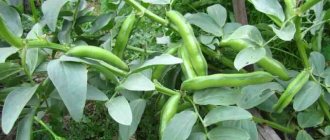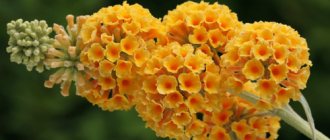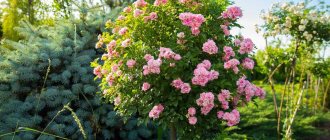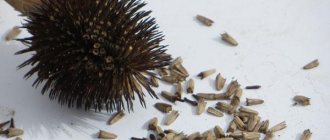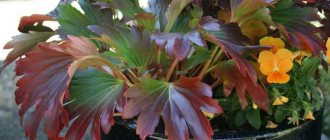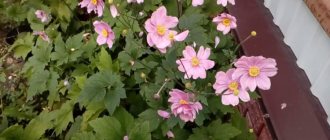Loading…
Loading…
An ornamental deciduous shrub that blooms with beautiful yellow flowers in spring is Keria or Japanese Kerria (lat. Kerria). The mountains of China and Japan are considered its homeland. Under natural conditions, the bush grows up to 4 m in height, in the summer cottages of Russian gardeners it reaches a maximum height of no more than 2 m. Kerria received its name in honor of the famous botanist who breeds ornamental shrubs in the Ceylon Royal Botanical Garden, researcher and breeder William Kerr.
In landscape design, only one type of plant is used - Japanese kerria. However, the shrub has several popular varieties, differing in the shape of the leaves and flowers.
Description of the appearance of Japanese kerria
The plant belongs to the Rosaceae family.
Kerria is a deciduous shrub that naturally has a cone shape. In ornamental gardening, shrubs are given the desired shape during annual pruning. The crop is grown in open ground, winter gardens, and greenhouses. Of interest are not only the yellow, full flowers that bloom in the spring, but also the carved leaves. Depending on the variety, they are painted in a single green or variegated color, such as the Variegated Kerria. The decorative crop does not lose its attractiveness even after flowering. In summer, the leaves, reaching a length of up to 10 cm, remain green in color. By autumn they turn bright yellow. Depending on the variety, the buds are simple, double or full. The size of the flowers varies from 2.5 to 4.5 cm. Flowering occurs at the end of May and continues until the beginning of August.
If the weather is warm in September and October, the kerria will bloom again.
Main characteristics:
| Name | Description |
| Species name | Kerria; |
| Flowering duration | from 40 to 55 days; |
| Time for planting young animals | April, September; |
| Drought resistance | medium, requires systematic watering during budding and flowering; |
| Frost resistance | medium, requires shelter for the winter; |
| Resistance to diseases and pests | high, insecticide treatments are not required; |
| Features of cultivation | sanitary pruning of shoots in early spring and formative pruning after flowering are necessary; |
| Reproduction methods | cuttings, dividing the bush, layering. |
Garden designers recommend that when choosing a place to plant a plant, take into account the fragility of young shoots.
If the branches are long, they may break in gusts of wind. Therefore, it is advisable to plant shrubs of other species nearby, which will serve as a natural shield.
Autumn care and wintering
Keria's frost resistance is average. Therefore, it is better to provide the crop with shelter for the winter so that it does not freeze. The main thing is to keep the bush dry during the winter. It will die due to damping out and stagnation of moisture. Therefore, during the rainy season in the fall, it is better to additionally protect the plant. Simply cover it with waterproof material.
In October-November it is worth taking care of shelter for the winter. The procedure must be carried out in dry weather. Bend the stems to the surface of the soil, first provide a foam base. Make a frame of stakes, cover with waterproof but breathable material. Sprinkle dry leaves on top. The shelter should be dry and allow the bush to breathe. Otherwise, he is in danger of rotting away.
With the onset of spring, the shelter must be removed gradually. The weather outside should be warm without frost. Gradually accustom the keria stems to sunlight so that they do not get burned. First remove the material, then reduce the height of the dry shelter. If in winter the air temperature does not drop below -10 degrees, then you can leave the plant without shelter. But in mid-latitudes it is better not to stress it and to cover it.
Planting in open ground
According to gardeners, Japanese kerria, planted and cared for (photo below) in accordance with agricultural technology, pleases with flowering every year, has a long growing season and an attractive appearance.
Recommended planting conditions:
- in regions with a warm climate, it is advisable to plant seedlings with a developed root system in September, so that the plant has time to take root a month and a half before the onset of cold weather;
- in regions with short summers, it is recommended to plant the shrub in the spring;
- a suitable place should be well lit, away from groundwater and drafts;
- a planting hole measuring 60/60 cm is filled to 5 cm with crushed stone or expanded clay to ensure drainage, then a bucket of fertile mixture (humus, sand, dry mineral fertilizers) is poured into it;
- a bucket of water is poured onto the fertile layer, and the root system of the seedling is placed on top;
- Having straightened the roots, add a mixture of turf soil and humus into the hole so that the root collar is at ground level;
- the soil around the trunk is compacted and watered.
Shrubs of the Kerria species are afraid of nearby groundwater. If the water does not leave the roots well, they begin to rot and the plant dies. However, a drainage layer helps to cope with this problem; it is not advisable to neglect it when planting.
Caring for kerria in the garden
Growing conditions
Caring for keria serves primarily to maintain a high level of its decorativeness, and, as we know, only a healthy and well-groomed plant can be beautiful. Kerria in open ground needs regular watering, loosening the soil around the bush, weeding, fertilizing and pruning.
Water the kerria as needed when the top layer of soil dries out. The plant especially needs moisture during the flowering period and during drought. Water for irrigation should be settled and warm. If the summer is rainy, watering may not be necessary, since kerria does not like waterlogging. After watering or rain, loosen the soil around the bush and remove weeds.
Growing kerria involves adding fertilizer to the soil. After flowering, the plant is fed with mullein infusion (1:10) or matured compost with the addition of wood ash (dose - 100-200 g of ash per m²).
- Oregano: cultivation, types and varieties
Transfer
If necessary, the kerria bush tolerates replanting well, and if the procedure is carried out with great care, then this can be done at any time of the year, except winter and late autumn. But it is still better to replant kerria in the spring or in October, when there are no leaves on the plant. Kerria is carefully dug around the perimeter of the crown projection, removed from the ground, transferred to a previously prepared hole and lowered into it along with an earthen lump. Next, proceed as for the initial planting.
Within two weeks after transplantation, the kerria flower needs regular and abundant watering: the root zone must be saturated with moisture.
Reproduction
Reproduction of Japanese kerria is carried out by vegetative methods: dividing the bush, layering, shoots and cuttings.
Lignified cuttings are cut in April, green cuttings - in mid-summer. The cuttings should have two buds; the lower cut is made oblique. The cuttings are planted in a cold greenhouse, which is placed in light partial shade. Kerria cuttings form roots well, but this process is not quick: the cuttings remain in the greenhouse over the winter, and only in May of next year they are planted in separate containers and grown at home. Kerria cuttings are planted in open ground in a permanent place after another year.
To propagate kerria by root suckers, you need to separate the shoots from the mother bush in early autumn and plant them. The fibrous root system of the offspring is well developed, so with regular watering and good care, the young plant adapts to a new location quite quickly.
It is also easy to propagate kerria by layering: in the spring, before sap flow begins, place the kerria shoots in pre-dug grooves about 7 cm deep and secure them in this position. In a week and a half to two weeks, new shoots will begin to grow from the buds of the cuttings, and when they reach a height of 10-15 cm, you need to sprinkle the grooves and shoots up to half the height with fertile soil. By autumn, the new plants will have roots, and the cuttings can be separated and replanted in a permanent place.
Dividing the bush is often combined with replanting the kerria: after you dig up the bush, carefully free its roots from the ground and divide it into parts so that each division has developed roots and strong, strong shoots. The cuttings are planted in pre-prepared holes in the same order as during the initial planting of kerria seedlings, and watered abundantly.
- How to grow ageratum in a flowerbed
Trimming
In early spring, before the buds swell, it is necessary to carry out sanitary pruning of the kerria, that is, cut out the broken and dried shoots that have frozen over the winter to healthy wood, and shorten young and healthy ones by a quarter. As a result of pruning, the bush becomes dense and compact, and the kerria blooms abundantly.
After flowering, you need to cut out four to five year old shoots of kerria to the ground, and slightly shorten the young ones to maintain the lush shape of the bush.
Pests and diseases
Kerria japonica is very resistant to diseases and pests. Cases of kerria being damaged by insects, fungal, viral or bacterial infections are unknown.
Necessary care
A plant with monochromatic leaves is less demanding of growing conditions than variegated forms. Half the success of growing depends on the correct planting location: in the shade the bush will not bloom, in the hot sun the flowers will quickly fall off. The best option is partial shade from a tall tree.
Watering. Moderate, after the soil has completely dried. It is not advisable to over-moisten the soil. From May to August, one watering per week is sufficient.
Fertilizer application. After flowering, apply organic fertilizer (mullein infusion).
Prevention of diseases. The shrub does not need treatments against viruses and fungi.
Trimming. In the spring, after the buds swell, frozen and broken branches are removed with pruning shears. In an adult plant, all shoots are also shortened by a third, giving shape. After flowering ends, branches older than 4–5 years are removed at the root, and the shoots are shortened to the desired length.
Wintering. Fallen leaves are removed from under the bush and the soil is dug up. Before the first frost, the branches are tied, laid on the ground and pinned. Cover the top with fallen leaves, sawdust or spruce branches. If severe frosts are expected in the region, then it is advisable to cover the tops of the bushes with burlap or special covering material and secure them to the ground with metal staples. The kerria is opened gradually in the spring, when the likelihood of night frosts is minimal.
Keria in landscape design
This shrub can be used on the site as a tapeworm, as well as in compositions with other crops against the backdrop of a green lawn or ground cover perennials and primroses:
- witch hazel;
- periwinkle;
- primrose;
- Heuchera;
- azaleas;
- rhododendron.
Suitable neighbors for keria are other shrubs:
- purple-leaved hazel;
- bloodroot.
The crop is planted as a hedge. They combine it with upward-facing conifers: thuja, juniper, hosta.
Keria is an ornamental shrub that has rightfully taken pride of place in the design of personal plots. It begins to bloom quite early, when many flowering crops are just opening their leaves. With good care, flowering is possible even in autumn. The plant is easy to propagate and is not picky about growing conditions. And unlike many other garden crops, it practically does not turn white and is not damaged by pests.
Below is a video, after watching which you can find out more useful information about growing Keria on the site:
Types and varieties
One type of Japanese kerria has several varieties. The most popular among them are the following:
- Albomarginata is distinguished by a white outline along the edges of carved leaves, grows slowly, and has simple, five-petalled flowers.
- Kerria japonica "Variegata" is characterized by its short stature (60 - 70 cm) and blooms with simple, yellow flowers.
- Argenteo-marginata has beautiful full flowers and grows up to 2 m in height.
- Albiflora blooms with small white flowers.
- Aureovariegata is most loved by gardeners because of its beautiful, full inflorescences and long flowering.
- Pleniflora has peony-shaped small flowers and solid green leaves.
Growing in central Russia
The evergreen shrub can be grown in all regions of Russia. But in order to grow it in the middle zone, you need to spend a lot of effort, time and follow simple rules of care.
must be covered for the winter . Before covering, the branches are bent to the ground and carefully covered with spruce branches or dry leaves. To prevent the branches from straightening out, a well-ventilated frame is made above the plant.
When spring arrives, the shelter is removed and shaded from direct sunlight. This procedure must be carried out in cloudy, windless weather.
Kerria japonica or Kerria japonica pleniflora
We will talk about such a beautiful and fabulous plant as kerria, this plant got its name in honor of William Kerr, he was the first gardener in the royal botanical garden on the island of Ceylon. And as you probably already guessed, it grows specifically in Japan, and accordingly, it is also called Japanese kerria .
The plant itself is a shrub, a kerria bush. This is an amazingly beautiful creation of Mother Nature. Its beauty lies primarily in the elegant and graceful structure of thin branches, which form intricate, interesting patterns, seemingly like any other Japanese plant. And of course, this whole picture is complemented by the leaves themselves, which smoothly continue the image already given by the branches. They seem to have been carefully drawn by the skillful hand of a master, but we all know who the master really is.
The color of the plant is remarkably yellow, even more than yellow, the leaves are bright and even golden, pleasantly pleasing to the eye, the color is soft and does not hurt the eyes, the appearance of the plant is really very pleasant. However, what is noteworthy is that there is another variety of this shrub - pink kerria , this type also takes place and it is, of course, no less attractive and pleasing to the eye.
Flowering period
Now let’s talk about the features of kerria as an object of nature. For example, about the period when it blooms. It blooms, oddly enough, in the spring, this warm and, of course, favorable time for the flowering of any shrub. To be precise, this happens in the last days of May, when Japanese kerria is just beginning to bloom. In addition, kerria, surprisingly, blooms several times : it blooms again at the end of summer, but, unfortunately, it does not bloom as profusely as in the spring in May.
Another simply amazing property or feature of this pleniflor is its durability , just like that of a real Japanese samurai. The Japanese kerria plant itself is very delicate, but despite this, it can withstand frosts well and behaves hardy in winter, however, sometimes the ends of the shoots freeze in winter.
You are probably interested in knowing how to grow such an unusual plant, now we will find out, because no matter what the shrub is, you can find an approach to it and grow it safely. Kerria does not tolerate wind, especially cold wind , so planting must be done in a place sheltered from the winds.
Of course, one of the most important factors is the soil. For Japanese kerria, moist, fertile soil mixed with sand and containing clay is suitable.
It's no secret that over time, any plant, shrub or flower begins to dry out, of course, the plant will live for a very, very long time if you care for it properly, but it is constantly, albeit with a certain frequency, modified in every possible way, and sometimes cuttings or individual The branches on the kerria begin to dry out. They need to be cut so that the bush can continue to develop safely, but this must be done at a certain time; it is advisable to cut off dead cuttings in April.
Under these conditions, you can easily and, most importantly, grow kerria correctly, let’s summarize:
To grow this plant you need to remember two things:
- A place sheltered from cold winds.
- Fertile land with sand and clay.
Reproduction
Probably, if you have already decided to care for Japanese kerria, then it will be interesting and useful for you to learn about the propagation of this plant; we will find out how easier and more effective it is to propagate Japanese kerria right now.
The easiest way to propagate kerria is to divide the bush ; of course, an older bush is best suited for this purpose. After division, it is necessary to press or somehow attach the flexible shoots of the plant to the ground. Thus, you will get horizontal layering, of course, it will be better to do this if you can really press but at the same time leave the shoots intact, for example, by tying them to a perch, or placing plates or any other device over the shoots that will not allow the plant to rise.
In addition, there is another way to propagate this lovely plant. You can also separate the shoots from the bush and grow them; it is recommended to do this in a shaded place, where, of course, there will be no wind or frost. At this time, while the kerria has not yet grown and become stronger, it must be watered, abundantly, but not excessively.
Now let’s talk about how to properly plant Japanese kerria so as not to damage it and so that in the future it will grow and flourish calmly. At the very beginning, of course, you need to dig a hole for the kerria; it should not be particularly deep; a hole sixty centimeters wide and about fifty centimeters deep will be enough.
The hole should be filled with soil favorable for growing, turf soil, humus or other fertile soil, and finally add about eighty grams of natural fertilizer. And the shrub itself should be planted in this hole full of excellent soil, after which, of course, one should not forget about watering the kerria.
Sometimes it is worth replanting the kerria, it will be more beneficial for the plant, and since it is not particularly picky, you can do this at any time, however, you should never forget about accuracy. True, there is some advice that it is still better to replant in the spring or autumn, at which time there are no leaves on the bush yet.
Read also: Canna planting and care in open ground in the Moscow region
This plant is really very, very moisture-loving , and it is worth watering more carefully, especially after transplantation.
It is important to know the intricacies of growing and caring for this plant, here are some of them:
After the first flowering of the bush, around July, the plant should be pruned and fertilized with a healthy infusion of mullein. Tall branches need to be pruned more abundantly and kept to the same cutting level. Young borings can also be cleaned a little, but cutting them off is in no case recommended; you can only clean them up a little, so to speak, for the sake of decency, and then the kerria will feel fresh and pleasant, and will be able to continue to bloom freely and easily.
Judging by the condition of the plant, you can determine how often it is worth feeding it with the miraculous infusion of barnyard. It is, of course, not advisable to overuse fertilizer, but to improve the condition of the bush, you can water it with mullein one more time a week after the pruning operation.
These procedures, including cutting and fertilizing, stimulate the active and vigorous flowering of Japanese kerria. The bush crown is actively growing. In addition, the number of young and fresh shoots increases noticeably.
Let's summarize how to care for the plant:
- When drying out and actively growing, trim the cuttings and the plant itself.
- Fertilize kerria with special substances in reasonable quantities.
Several interesting features of kerria lie in its types; in addition to the most common Japanese kerria, there are several more equally interesting varieties of the plant. In addition to the main form, the bush has another one - terry. In its usual form, the flower consists of five bright yellow petals; they reach five decimeters in diameter.
In the case of double kerria, the flowers resemble miniature roses, also yellow. These flowers appear, as a rule, closer to the top of old branches, at the ends of young shoots, or even on new leaves that have appeared only this year.
That's all the most important and most interesting information about this amazing Japanese plant - kerria, it will perfectly decorate your garden or add color to any other place, but we must not forget about the care and maintenance of the shrub, and then it will really never cease to delight you with its bright, bright colors. pleasant view, carefully watch the kerria and then your mood will always be normal.
